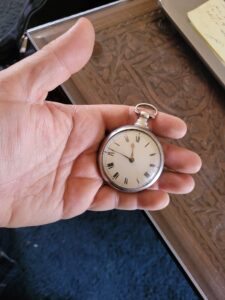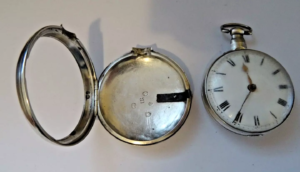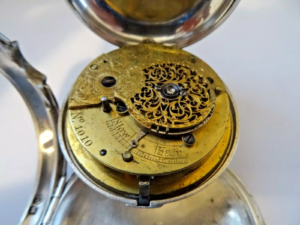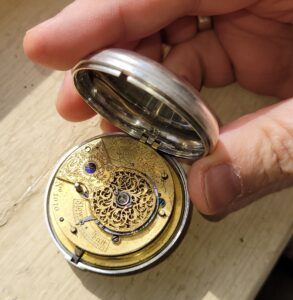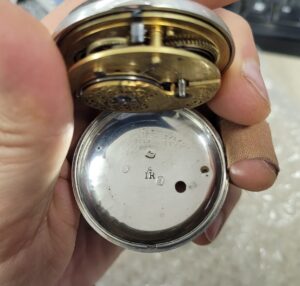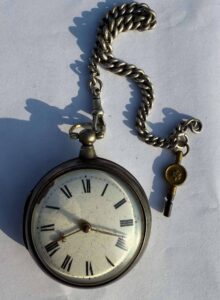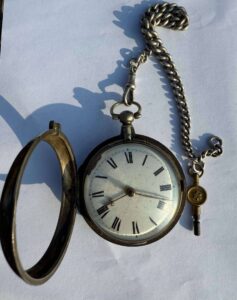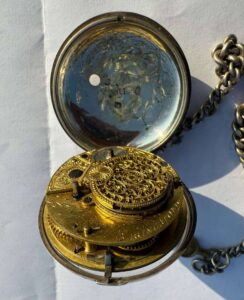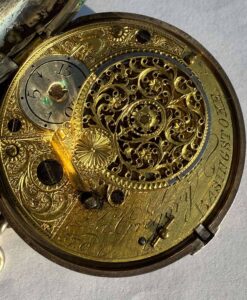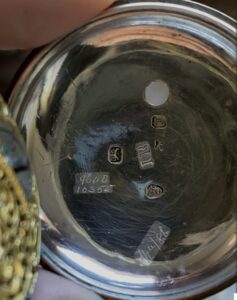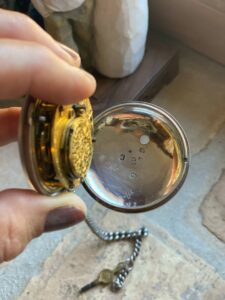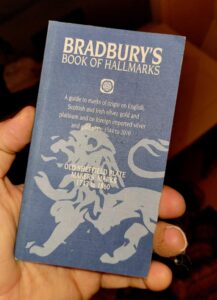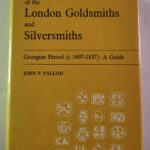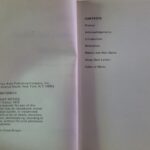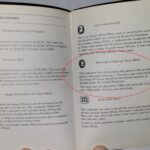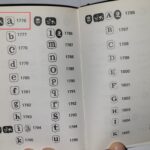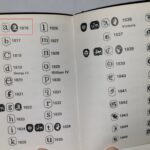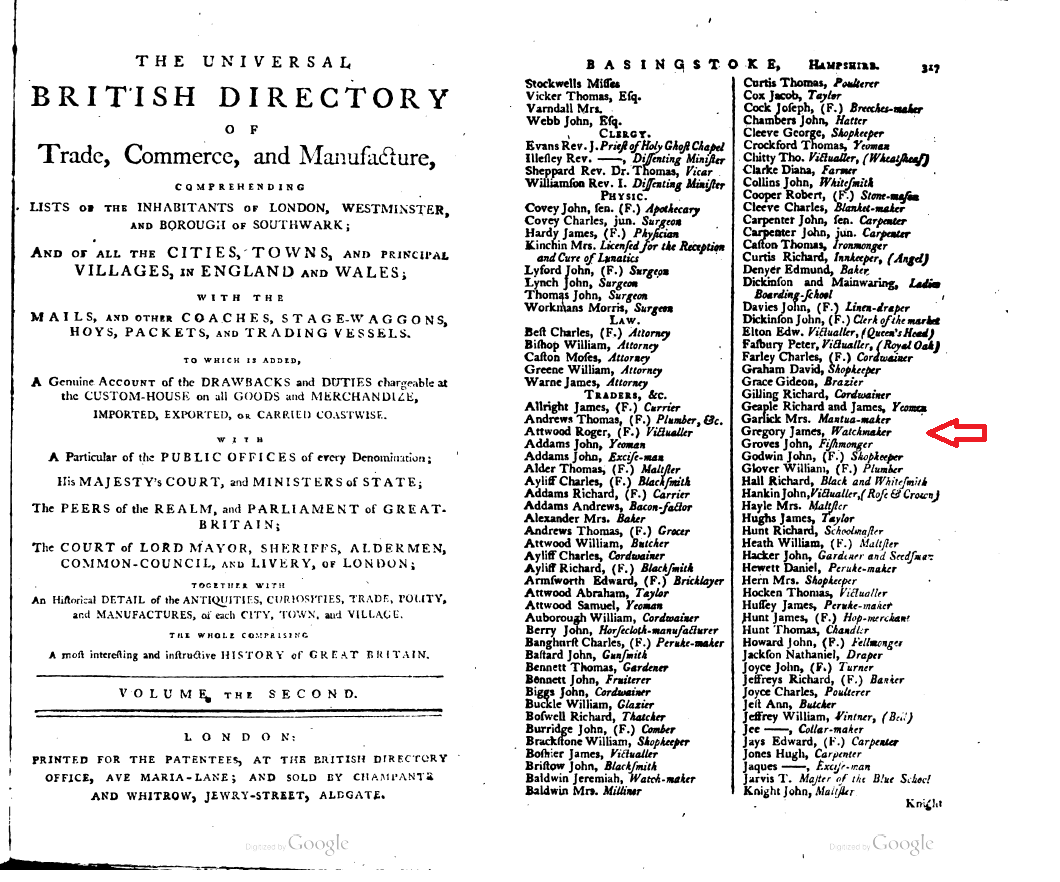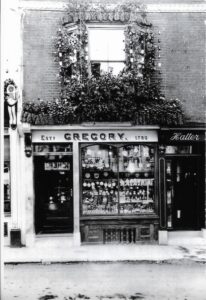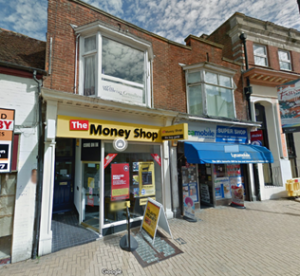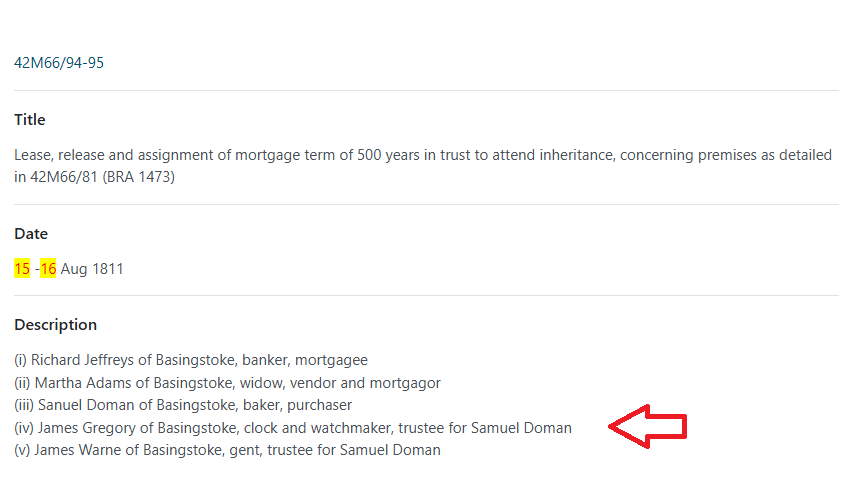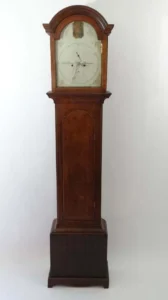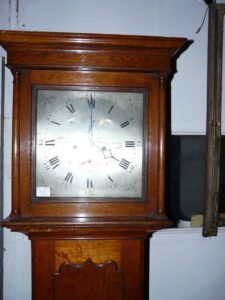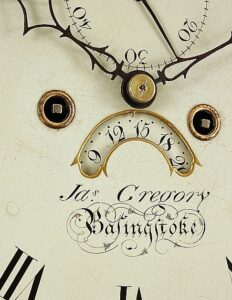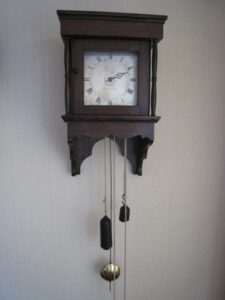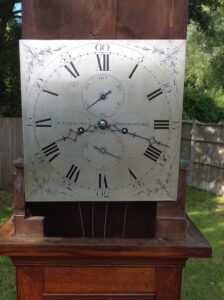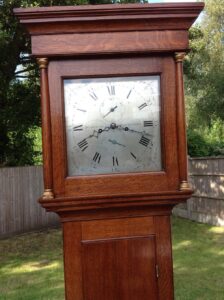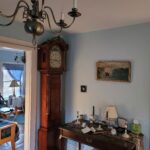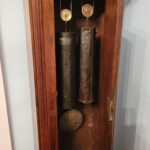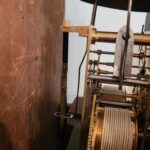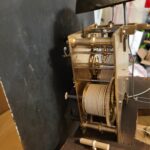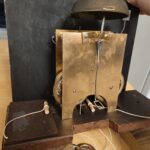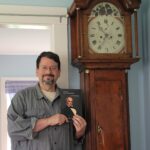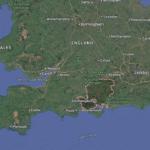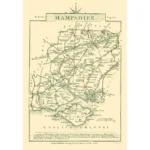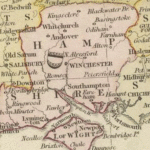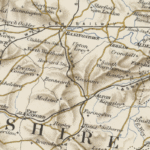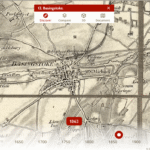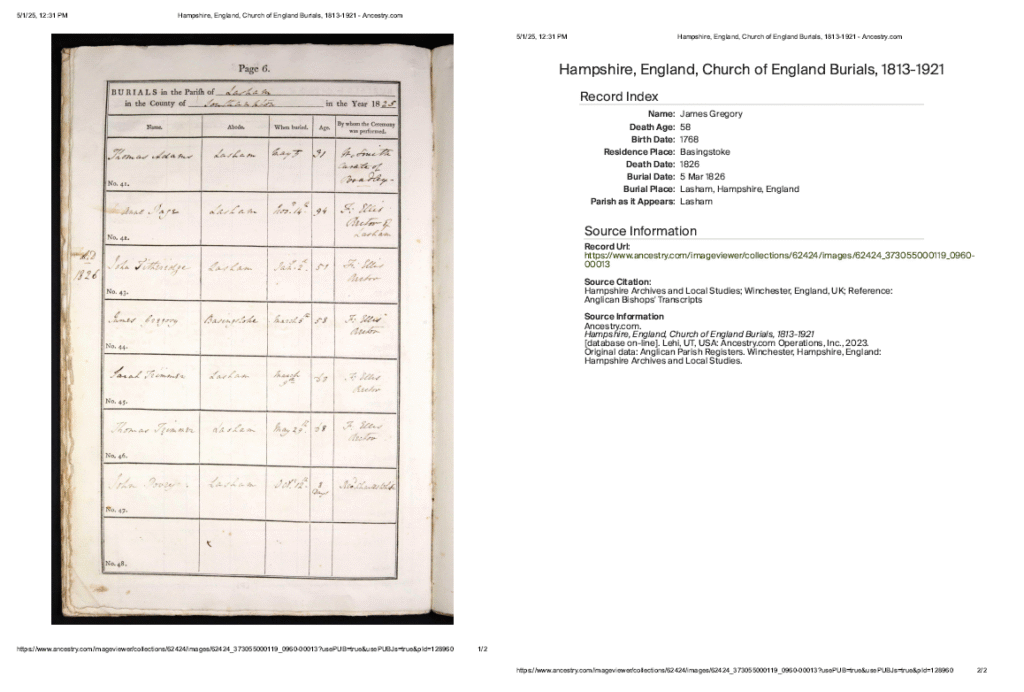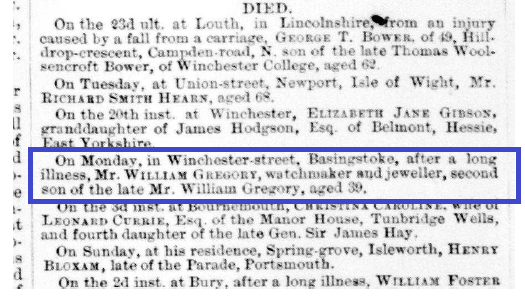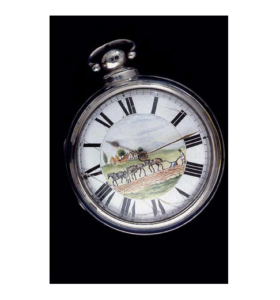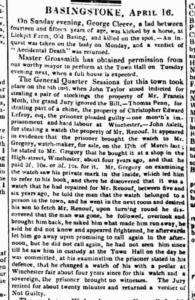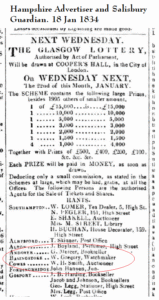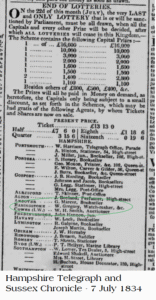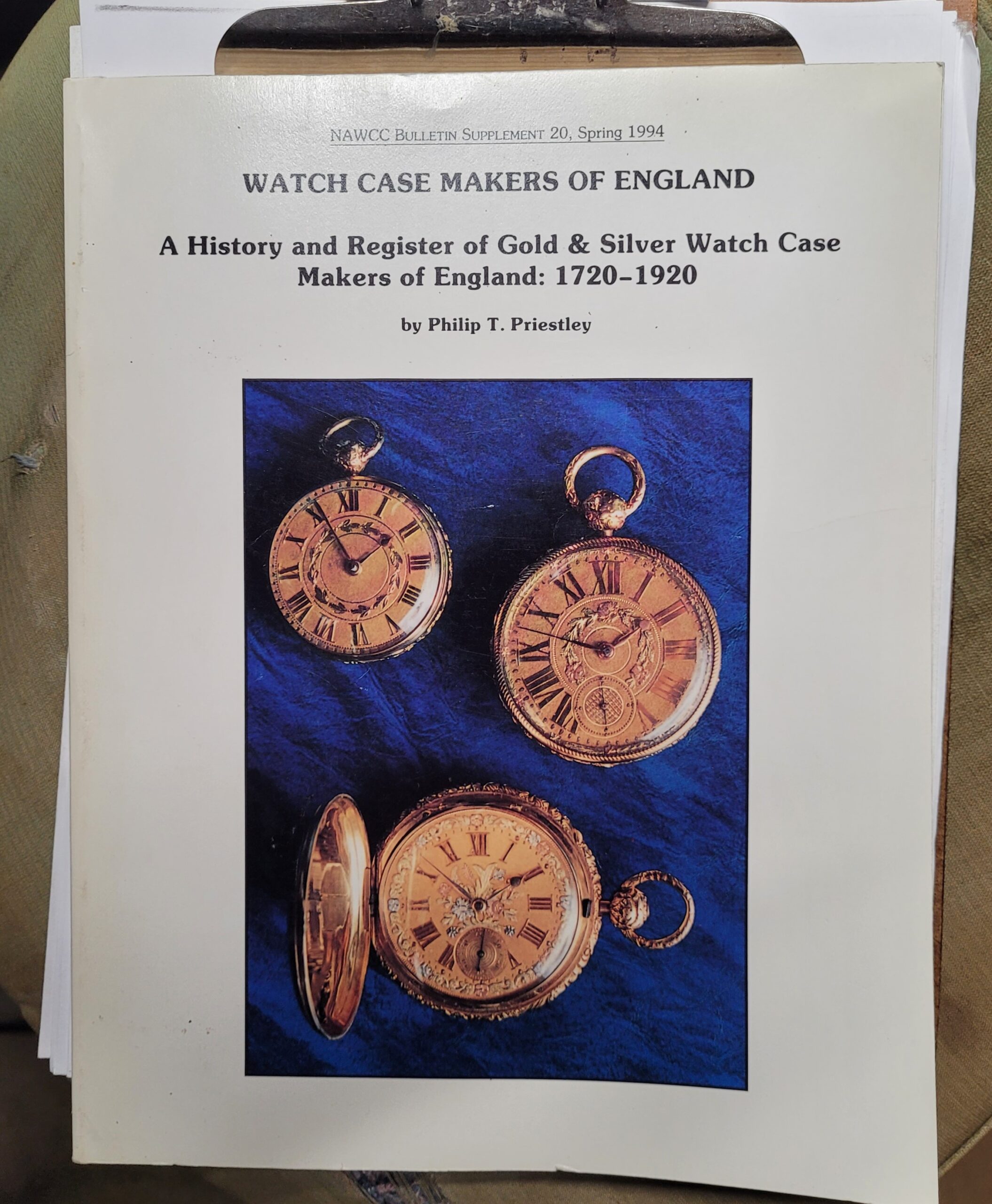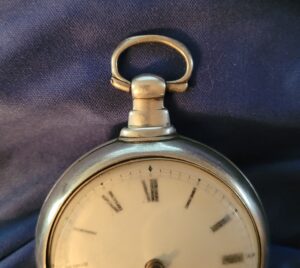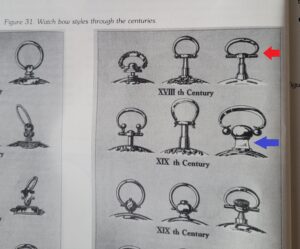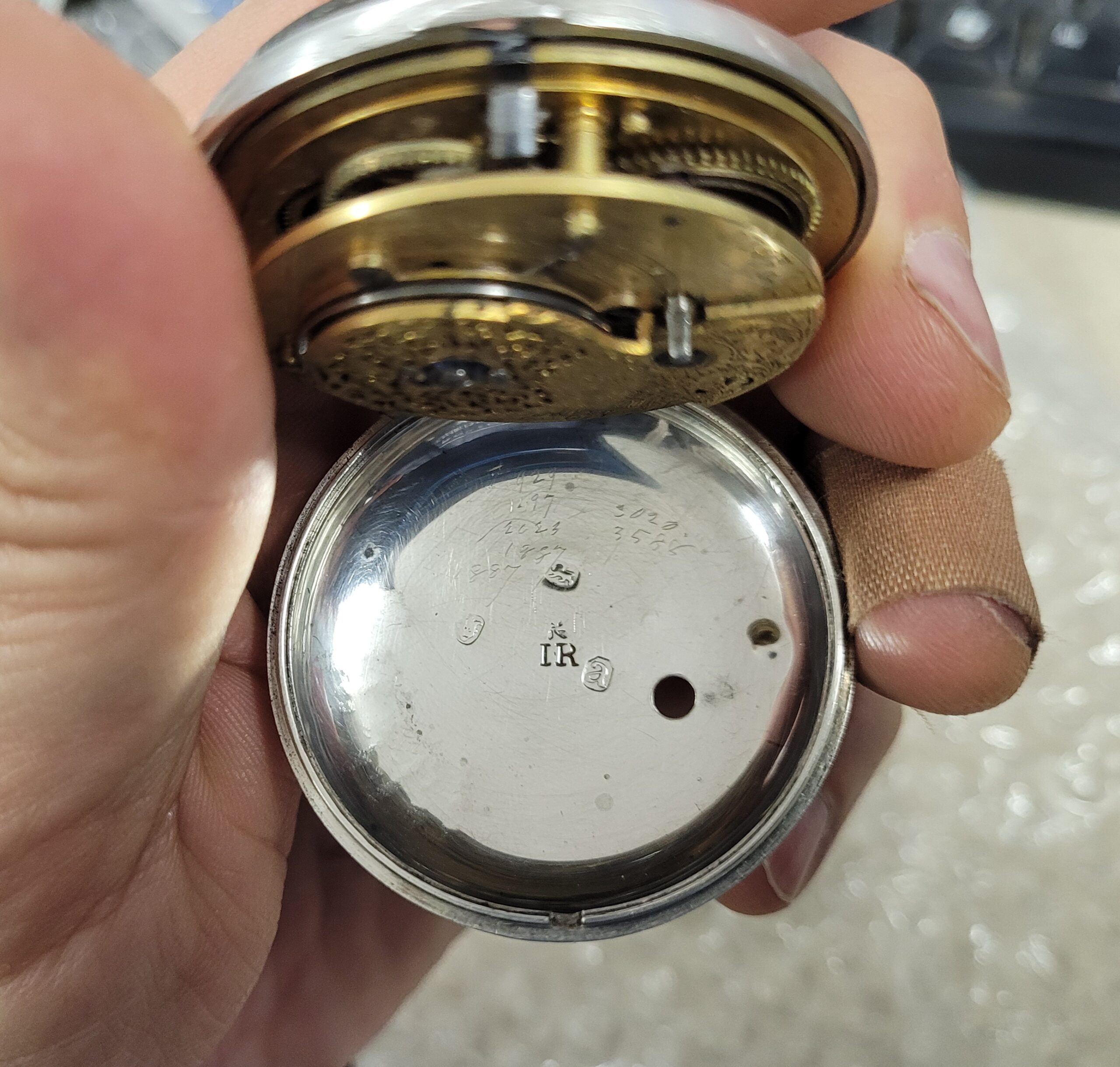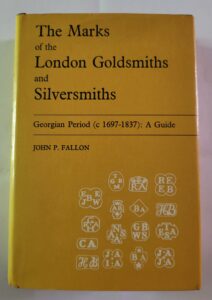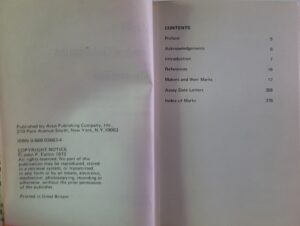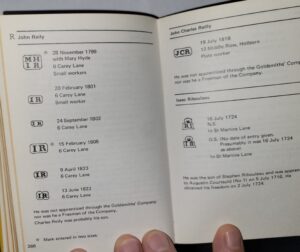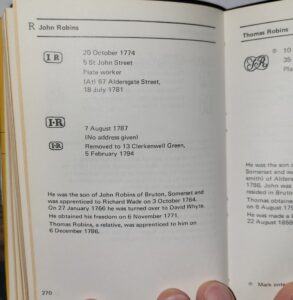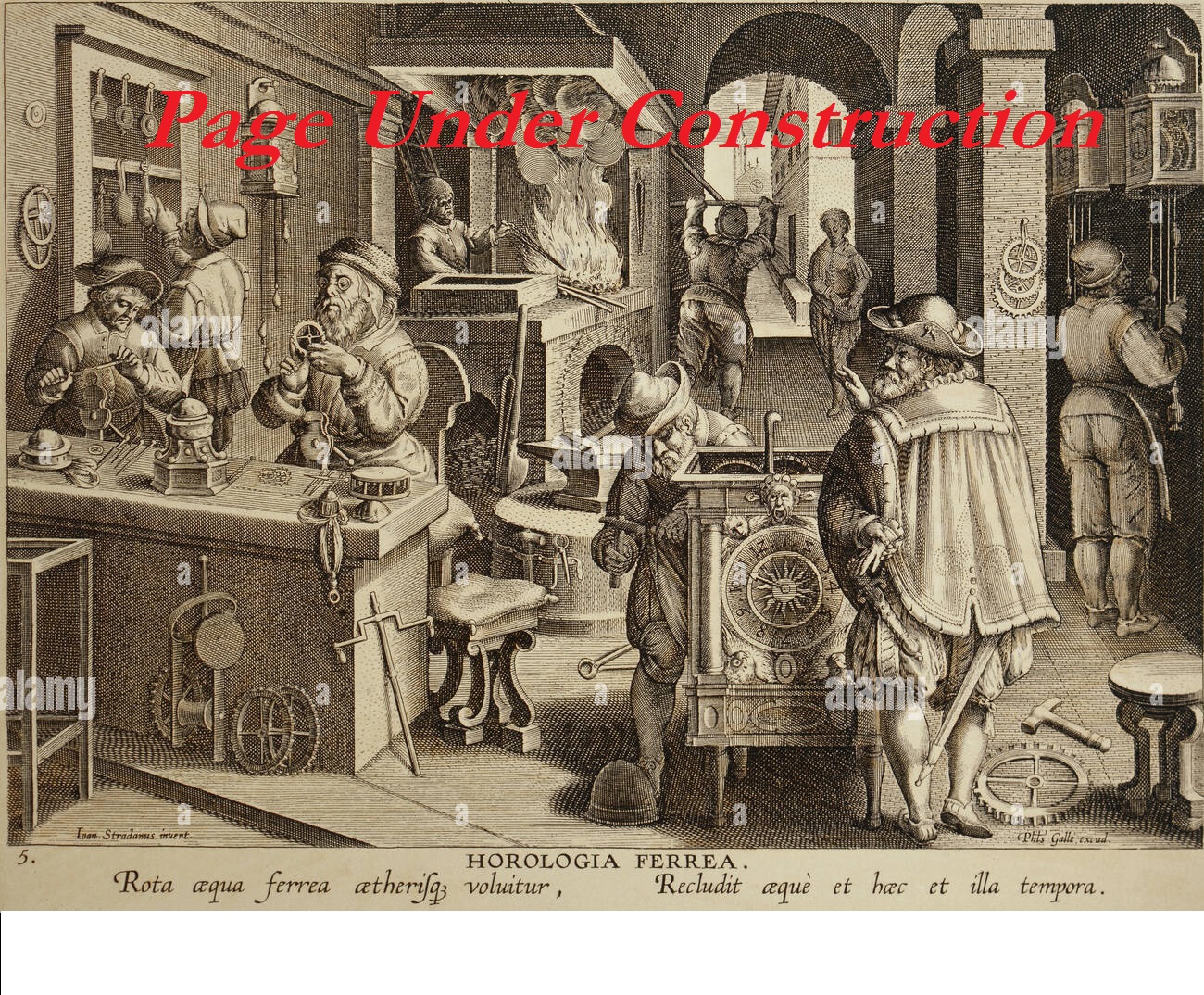This Page Is Under Construction And May Be Frequently Updated
I know that this is a little bit off topic, but in collecting things that someone from this era might have carried, I found myself on a side journey; I think it noteworthy to share here. This has been an intriguing project and I know that while I’ve hit a few walls in the research, only to uncover a key to a door I was stuck at, there might be more focused genealogists who will take what I have here and expand it (and maybe even correct some of it). At least I will have answered some questions and then provided a launching pad for someone’s greater project. I live in Connecticut, USA, and as I commonly travel to the locations regarding my research – when I am able – not having Basingstoke within a couple of hours drive leaves me with doing my research entirely by the internet and by tapping into the help provided by others. I accept full responsibility for my conclusions below; should you have questions, anything to add, or to critique, feel free to reach out either as a question posted on this webpage or directly to my email address: JosMorn@aol.com
Joseph Morneault
- The Purchase
- Questions and the Search Begins
- Some of the Evidence
- The Search for James Gregory
- James and his Will
- William Gregory
- Silversmith – Watch Case Maker
- Goals
- Conclusion
The Purchase
Recently, February 2025, I made the purchase of an antique verge fuzee watch, a “paired” one, from a seller in the UK. To have a working pocket watch from “my” era (1790 – 1810) has been on the top of my “bucket list” since about 1990, and this was most exciting for me! I tried for one dated ostensibly to 1805, but while I “won” that auction, it didn’t meet the seller’s reserve price, whatever that was supposed to be. I played the game a second time, won again, and still didn’t meet the hidden reserve price. I made a direct offer which was turned down, and so I moved on to another lovely, silver pocket watch that was dated to 1816. Of course, this is much later than my 1790s-18-aughts range, but this seller stated that it was working although in need of some TLC. I won this auction and the seller sent it along.
It is rather irrational, I suppose, to hold something in your hand for the first time (children and the newborn of your pets exempted) and feel an immediate connection. Yet there I was, in love with a watch and was glad for it! It did not come with a key (for these are key-wound), but I have a set of different gauges, and I quickly found that it wound (anti-clockwise) and worked; that said, it could lose 10 minutes, or gain an hour, seemingly at random. I have a guy in Maine who did, to my mind, miracles in restoring my step-father’s family clock (believed by family tradition to date to 1782/4), and did wonderous restoration to a couple of my pocket watch collection. So I sent this, reluctant to send it away, in the post. A few weeks later, I was going up to the family farmhouse, and I reached out… We met and my man placed it back in my hand, telling me that this type of works for a pocket watch is out of his area of comfort and would rather I take it to someone keenly focused on this style. I honour him for his honesty, and I brought it with me. I researched who might be a good candidate and found someone in New Hampshire, but with a waiting list. As I type this, I am still waiting for the nod to send it along…
Questions and the Search Begins
Meanwhile, I joined a Facebook group related to antique pocket watches. Around this time, I was informed by someone else that my watch likely dated to between 1800 and 1805 based on several things that I did not yet understand. I posted photos of my watch and told a thumbnail of the story, and one of the members posted a comment that he felt that it was a date of 1802 based on the hallmarks in the silver casing, he seeing a “g”, which meant nothing to me. So, as I do, I began a concerted search online for data to understand watches of the era and of hallmarks. The name of the watch maker is engraved on the back of the works – Jas. Gregory. I know of a few people from the 18th century whose names were Jason and used “Jas.”, so I went with that as I began my search. Quickly learning that it was more common for “James” to use that, my search opened up. James Gregory in Basingstoke, presumably England. What could I discover about him? Had I found someone’s bio on the man, that would have been enough, and I would have moved on. But there’s scant little, and now my curiosity is piqued. I dug here and there, gleaning some very brief references to the man and his shop on Winchester St in Basingstoke, and that he also made case clocks and sold (or made?) musical instruments… this sounds familiar to the son-in-law to surgeon’s mate Dr. Nathan Tisdale… And Basingstoke immediately came to the mind of a dear friend who is a Jane Austen fan. For context, see this flyer from the Basingstoke Heritage Society. -> Jane Austen Leaflet
Some details of my watch…
‘Round about this time, Karen reached out to me via Facebook Messenger; she, also, had a Jas. Gregory watch by way of her grandfather, and asked if I had any information on the maker… See the following gallery.
- Jas. Gregory. Basingstoke. Serial number 570
- Per the Bradbury book, this silver would date to 1804
This was fuel to my fire, and while I shared with her what I had thus far collected, I needed to know more. I found a copy of Bradbury’s Book of Hallmarks (for a reasonable price… some of the ones I saw listed had insane price tags on them) and made a startling discovery…
- Note the right hand side, the red circle and the blue circle to correspond with my text.
Some of the Evidence
The hallmarks on the silver outer and inner cases for my watch have specific hallmarks. There’s a lion, a lion’s face with a crown on it, the letter “a” in lowercase (not the “g” an online friend thought that he could distinguish), the initials IR, and a small crescent. Looking at the Bradbury book, it would seem that the silver was brought to London to be assessed. The marks indicate that it was done by the London Silversmiths Office, given the lion and the lion’s face wearing a crown. Now, IF the watch silver was correctly dated to 1816, there would be an ADDITIONAL mark, or duty mark, of a sovereign’s head in profile, which there is NOT. The letter is the indicator of date: they would start with a lowercase “a” and go up the alphabet until “u”, then move on to uppercase “A” until the end and start again… to this point, “a” would be 1776, “u” would be 1795, then “A” 1796, “U” 1815, then “a” again would be 1816. In 1784 they began using the monarch’s head in profile as the “duty mark”… the silver of my watch has the “a” and no duty mark, and so Bradbury’s would place the date of my watch silver at 1776! NOT the 1816 date the seller had originally believed! I showed this to a dear friend of mine, who had begun his working career with a watch/clock maker, and he agrees with my interpretation from the tables in the Bradbury book. The initials are “IR” and there’s a journeyman’s mark in the form of a tiny crescent. Online I found a listing of known silversmiths and dates of the surviving examples, and my “IR” doesn’t fit any of those listed (The I is for J, thus it is really JR, and the only examples are variations of the initials in a rectangle and the dates don’t pin any of them to my watch). So, that’s another angle of research…
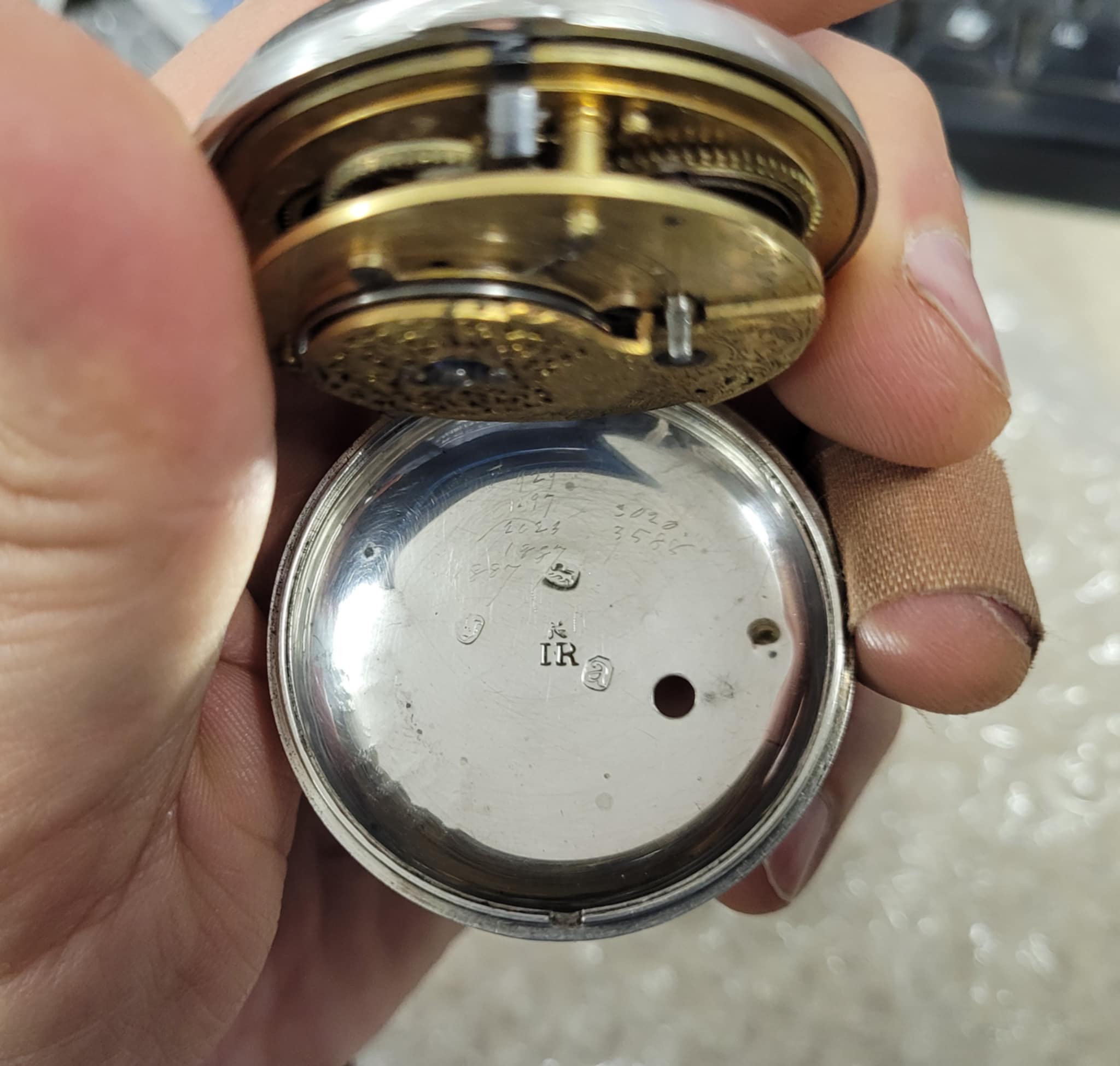
If you can make out the scratched numbers towards the top of this photo, these are “service marks”, or marks by a watch maker who serviced the piece for maintenance.
My friend Steven (he had started working as a teen for a local clockmaker) also told me what I should have realized but was “too close” to see the bigger picture… Clockmakers didn’t (or rarely) make the cases for their clocks. Local cabinet makers might turn out a few cases on downtime (making stock) to deliver to clockmakers upon demand. I had wondered if silversmiths might follow suit; a few people replied that this was possible. A silver smith might make a few cases and then bring them, by law, to the local assessor’s office (for Basingstoke, it was London) to have them inspected, hallmarked, and then pay the requisite tax before bringing them back to their shop and deliver to a watchmaker upon demand. New information cited below has damped the theory. Still, every pocket watch (again, with exceptions) are made by TWO people… the silver or gold smith making the cases, and the watchmaker who fabricates the watch and inserts the works into the handmade cases. [Update – 6 August 2025: see below and before the video]
So, in order to learn fully about my watch, I need to track down Jas. Gregory AND whoever “IR” stands for…
25 June 2025: I’ve finally acquired another “authoritative source” for this work. Mr. Fallon is in agreement with the Bradbury book cited above. I’ll address this more in the Silversmith – Watch Case Maker section, but do look at the notes I’ve put with the images just below here.
- Note the encircled paragraph, explaining the Sovereign’s Head Duty Mark
- Within the rectangle, one sees the corresponding marks to my watch.
- Within THIS rectangle, it is clear to me that an 1816 date requires the addition of the Sovereign’s Head Duty Mark.
6 August 2025: I entered into conversation with Nathan Das of Hallicra’s Works in Ontario. He explained a few things to me that cleared up so many of my questions and put aside some speculation about the case works. “Just by looking at the movement and containing a slide regulator rather than a tompion regulator we are likely in the early part of the 19th century. There are other indicators too which will coincide with the later date. Sadly using the export duty mark (or lack there of) as an indicator of year isn’t enough as this is lacking on many watches especially if they were first sold inside of English territory.” So, despite the lack of duty mark AND the indication that the duty mark commences in 1784, it would appear that it wasn’t used for domestic sales of the watch (so, within Great Britain, and possibly the various colonies?). Understanding this alone is enough to slide all other indicators to the next time the lower case {a} is used, which is 1816. Knowing that “Gregory’s” was established in 1790, the comparatively higher serial number engraved on the works, &c, &c, I think that Nathan’s input has been the final convincing puzzle piece for me. What’s more is that Nathan went on to say about the silver case… “Cases and movements are actually paired together. No surplus case would be made for a future date as the diameter of the movement would be unknown. In fact the movement, case, and sometimes back of the dial will all have the same serial number to keep together when watch portions were sent to silver smiths and dial makers. Each one custom fit together. No dial from one watch or case from one movement will fit another.” That would mean that the working theory I state above about making cases en masse does not hold water! I am happy to have gained more light into this, and am comfortable with how things are settling into place.
You can see Nathan and his shop in the following vid:
If you are at all interested in seeing the works of a verge fusee watch, you might clink on THIS link to “The Naked Watchmaker“.
The Search for James Gregory.
An internet search yielded some clues, thankfully, for Jas. Gregory. The late Arthur Attwood, historian and publisher of “The Illustrated History of Basingstoke” was a good launch for me. By way of him and some odd documents I was able to glean off of Ancestry.com, I learned that James Gregory was indeed a watch maker, clock maker, and seller of musical instruments in Basingstoke, Hampshire, England. It would seem that he was working under his own name by 1790 and as late as 1819 or so. I have not had any luck identifying who James would have apprenticed under. James’ shop appears to have been always on Winchester St… “one where the Johnson’s dry cleaners were until recently and before that on the other side of the street (north side) next to the entrance to Joice’s Yard.” So, the second location was on the south side, and Attwood indicates that Gregory was certainly at this 2d spot by 1819.
It is important to note that in Hampshire County and not too far afield, there are A LOT of Gregorys… John, James, Mary, William… There seems to have been little imagination or inclination to select from a wider pool of names, and this makes genealogy a migraine in the making! Most of the genealogies I’ve seen are patchwork, incomplete, and only serve to throw more mud in the water, albeit with the best of intentions. In an effort to parse out a family line, I, too, started a tree on that site to take advantage of their search engine. The result has been that far too many of the suggestions for one person or another are pushed for the wrong person; something more likely for a father is being suggested for the son, but it won’t allow for reassigning to the father. Or a long line of baptismal records for the name and in far away counties, but when you toggle the location bar to Hampshire, it gives the result of “no result”… yet I found the baptismal record for James and siblings in Hampshire, so this is clearly a “researcher beware” project. I fully expect for multiple corrections and revisions along the way, and it is not my intention to make a comprehensive Gregory Family tree… Yet I do hope to put together enough to give me a picture of my watchmaker and perhaps then leave something for descendants to use as a viable launching pad.
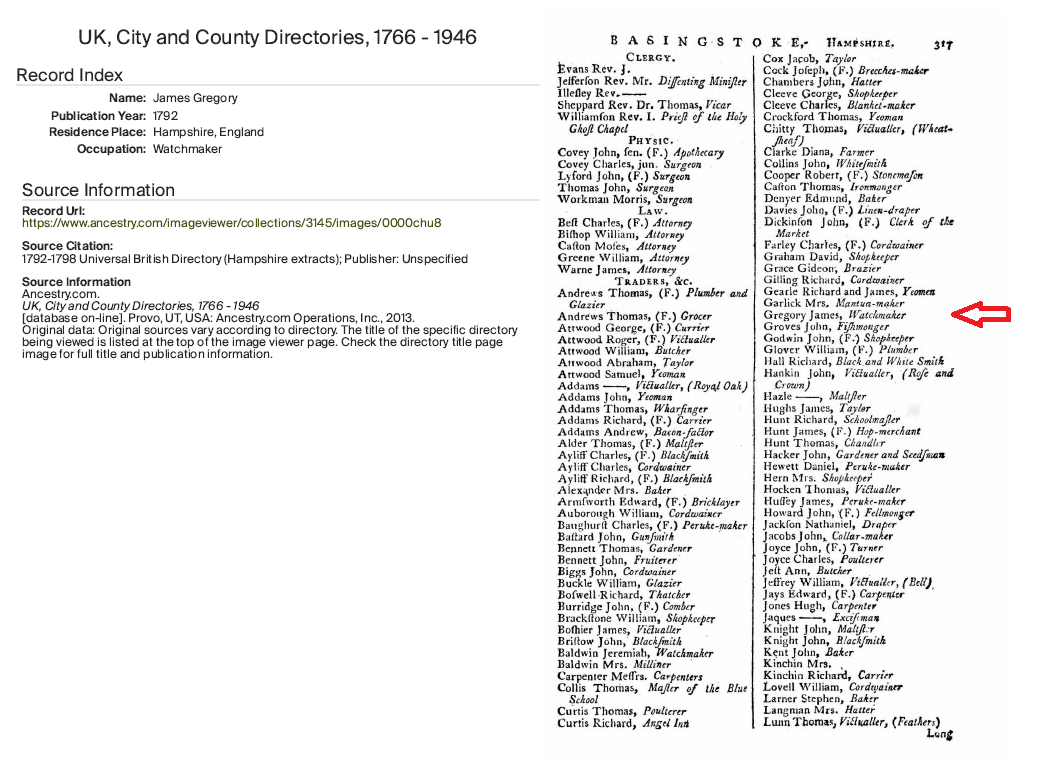
Here is the local directory for two years later. Gregory is listed as a watchmaker, as distinguished from a shopkeeper.
In communication with Debbie Reavell of the Basingstoke Heritage Society, the north side of Winchester St location was The Crown Inn entrance surviving as Joice’s Yard. The current business there is The Money Shop. There is a photo of the Gregory shop taken for the 1887 Golden Jubilee. See the images old and recent below…
- Gregory’s shop on Winchester St, apparently taken at the time of the 1887 Jubilee of Queen Victoria
- The same building today – 2025
According to the 1790 “Universal British Directory of Trade, Commerce, and Manufacture“, vol. 2, p.317 (Hampshire extracts), available via Ancestry.com, James Gregory is listed as “watch maker” in Basingstoke, Hampshire, England. Elsewhere he is also listed as a “clock maker, and musical instruments”. The 1792 edition of this directory also lists him as a “watchmaker”. Still another source claims that he was working from 1790 through 1813, and another that he was still in business in 1819. The Parish Registers of Hampshire, England, (also accessed via Ancestry) indicates that a James Gregory has married an Anne Goddard on 29 July 1801, but Ms. Reavell has her doubts, although does not dismiss it completely. See: https://www.familysearch.org/ark:/61903/1:1:N616-MF9?lang=en
I will note that I wholly agree with Ms. Reavell, given James’ will and how the business moved in the family: see below. I suggest that the Ancestry records indicating that James had married refer to another James Gregory, and family trees that list THIS James as their ancestor and having married have simply merged two or more James Gregory by happenstance. The above familysearch link is, based upon the subsequent research, NOT our James Gregory. Or, IF it is, (and I sincerely doubt it) then his wife will have died early, for she does not appear in the will nor in any other record for our James Gregory, watchmaker in Basingstoke.
Here is a land record provided by Ms. Reavell, mentioning James in 1811, and his occupation. Note that he indeed listed as a watchmaker and not a vendor or shopkeeper. Someone had confidently assured me that James Gregory had his name engraved on the watch as either the vendor selling a watch made by someone in London, or the owner of said watch. By the time you reach the conclusions at the end, I trust that you will also agree that the evidence points to James Gregory having been an actual maker of watches and clocks…
Also the mention below:
Another note regarding the shop of James Gregory selling more than only his watches and clocks. We tend to think of early tradesmen only doing that specific trade, while today we see storefronts of craftsmen also dealing in seemingly unrelated retail items. I put this thought to a couple of historian friends here in Connecticut and in New York, and the response was interesting. It would seem that there are myriad examples of watch and clockmakers here in the US during the late 18th and early 19th centuries, where musical instruments were also for sale. If one were to look at the son-in-law to Nathan Tisdale, Roswell Walstein Roath watchmaker and jeweler in Norwich, Connecticut, for instance, that is exactly the business model he engaged in, (made watches, cast silver into spoons and jewelry, set stones in his jewelry, sold musical instruments, and even tickets for local lotteries), and continued to do so when he removed his family to Denver. It was almost considered a standard in New York City for clockmakers and watchmakers to have a storefront that ALSO offered musical instruments and sometimes other items to sell as supplemental revenue, such as the aforementioned lottery tickets. So, Gregory selling musical instruments would not be a singular circumstance.
The Hampshire Cultural Trust has a case clock listed as having been made by James Gregory. And there are a few more examples of his clocks that I have found photos of…
- A tall case clock by James Gregory. Sold by P A Oxley Antique Clocks & Barometers Images found at https://www.sellingantiques.co.uk/132472/small-oak-longcase-clock-by-gregory-of-basingstoke
- Small oak tall case clock by James Gregory, Basingstoke. Sold from P.A. Oxley, Quality British Antique Clocks & Barometers. https://british-antiqueclocks.com/archive/225-small-oak-antique-grandfather-clock-by-gregory-of-basingstoke.html
- Small oak tall case clock by James Gregory, Basingstoke. Sold from P.A. Oxley, Quality British Antique Clocks & Barometers. https://british-antiqueclocks.com/archive/225-small-oak-antique-grandfather-clock-by-gregory-of-basingstoke.html
- Small oak tall case clock by James Gregory, Basingstoke. Sold from P.A. Oxley, Quality British Antique Clocks & Barometers. https://british-antiqueclocks.com/archive/225-small-oak-antique-grandfather-clock-by-gregory-of-basingstoke.html
Do consider that Clockmakers never – or rarely – made the cases themselves. Rather, it would be crafted by a cabinetmaker and provided to the clockmaker to then insert the clockworks. Often these cases were made to order, but often enough a cabinetmaker, knowing that orders would be forthcoming, would spend the winter making clock cabinets to deliver upon the order, or “creating stock”. So, a case clock would be made by two or more people; the cabinet maker (and maybe an apprentice) and the clock maker (and maybe an apprentice). We tend to list a case clock as having been made by the clockmaker but don’t take the time to consider the cabinet maker… this is natural, I think, for rarely does the cabinet maker put his marks in the cabinet for the clock, or rather, rarely does the paper with the information and glued to the inside actually survive the years. I, myself, own an unnamed case clock believed (by the family and recently agreed upon by the clock historian/restorer) to date to 1782: the works are very much in the style associated with clockmakers in New Hampshire, US in that period, but the case, in cherry wood, had been made in Philadelphia or environs, where the whole thing had been put together and sold to my step-family in or about that year, then being handed down until I inherited it from my step-father. Here are pics of my case clock, NO relation to a Gregory, but shared here for the sake of this conversation:
Maps below to indicate where in England one would find Basingstoke, for those who are not local to South Central England.
James and his Will
The Hampshire, England, Church of England Burials, 1813-1921, via Ancestry.com, indicates that James Gregory died in Basingstoke on 5 March 1826, aged 58. If this is correct, and we know that sometimes the age recorded at death is inaccurate, this would give 1768 as James’ birth year. In his will, I have been informed, James left the business to his nephew William; and that he also asked to be buried near his father John Gregory in the Lasham churchyard, which is adjacent to St-Mary’s Church and not very far from Basingstoke. That will is digitized and available via Ancestry, but while the image itself is clear and has a high definition, the clerk who wrote down this information for the record at the time appears to have used a wide nib while writing small… a result not unlike Donald Trump’s sharpie signature! This makes reading the document so surmountable a task that I am forced to seek professional help to transcribe it. I have developed a decent ability to read handwriting from the 18th century and early 19th, but this is beyond me; I can discern certain words mostly because I expected them. I tried using an AI service – Transkribus – but it returned mangled glop that was almost suggestive of Old English of Beowulf! That said, next I tried running it through ChatGTP and the result was far and away better… at first glance. It gave me what might seem a rather decent transcription of the mud, given that I can read some words and passages. Yet, I was still unsettled about some of the transcription kicked back at me; so, I reached out to a couple of friends who are stellar in this work: Donna and Thomas. I simply was trying to avoid bothering them, as they’ve done so much for me in earlier parts of my grand project! But they happily took up the challenge… and it became the Rosetta Stone for this quest.
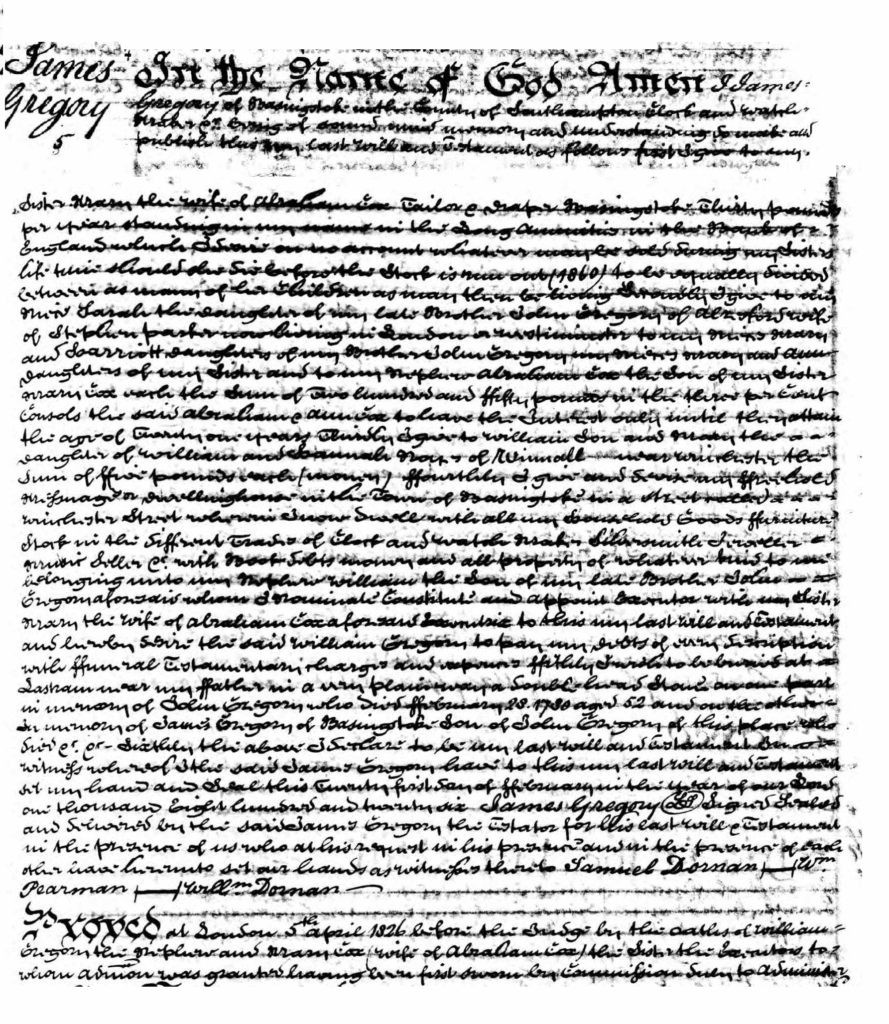
Actual will as written down by whatever clerk entered it into the official books. You can see the difficulty in trying to actually read it.
And the PDF of their transcription – Will of James Gregory per McQuades
> Update: 21 June 2025. Someone at National Archives, Kew, UK, as I was pursuing a different angle for this overall quest, pointed to their digitized copy of James’ will. It’s the same image I found at Ancestry, but far and away cleaner. I wonder how the copy for Ancestry was made if it was so “muddy”. At any rate, see this file: PROB-11-1711-62
For citation source, it is “Will of James Gregory, Clock and Watch Maker of Basingstoke, Hampshire.” Reference: PROB 11/1711/62
Date 05 April 1826
Held at the National Archives, Kew, Richmond, England.
What I now have is a family set: It would seem that James never married, nor had any offspring acknowledged in his will. “I James Gregory of Basingstoke within the County of Southampton, clock and watch maker, &c, &c.” He cites his living sister Mary, wife of Abraham Cox in Basingstoke, a tailor and draper by trade; their children Mary, Ann, and Abraham, the latter two being under the age of 21 in 1824. James refers to his brother John, deceased by the time the will is drawn up in 1824, and John’s children: Sarah (wife of Stephen Parker of London), and William. William is to be one of the two executors (along with Mary Cox, James’ sister), and William will get the house, shop, and business. James wished to be buried next to his father John Gregory, who died 28 Feb 1780 in Lasham.
This will was “proved before the judge” by the oath of “William Gregory, the nephew and residuary legatee substituted in the said will to whom administration was granted...” in London on 5 April 1826.
William Gregory
HERE was the door that frustrated my efforts for a few weeks. I’ll start by saying that in the mud of SO many people in the county with the name Gregory and SO many Williams, it was like picking the correct penguin from a colony; alright, that is hyperbole, but it was confusing that some people having done their genealogies seemed to, as I would later learn, crammed as many as 3 or 4 William Gregorys into a single person. The break came with the following obit, published in The Hampshire Chronicle, Southampton and Isle of Wight Courier, 10 Dec. 1870…
From here, I saw the key to understanding the family line, in as it related to my project. I could now build upon William, nephew to James, and the following…
Cambridge University Press & Assessment suggests that the average age of a youngster going into apprenticeship in the early 19th century was about 15 and a half years. James’ brother John appears to have moved to (New) Alresford, there becoming a tailor and draper, and marrying Hannah Morley. John died there in 1801, when his son William was 3 yrs of age.

The Hampshire Chronicle, or, Winchester, Southampton, Portsmouth and Chichester Journal. Monday, September 28, 1801. Front page.
The widow Hannah had six mouths to feed, and here James took in William to apprentice. Given the median age for this as cited above, let’s say by 1811 (per the article below), although I’d wager that it was much sooner. William may not have been the only one working in the shop for James, but it’s clear that he was the “son James never had” and inherited the house and business. Anything inscribed “Jas. Gregory” believed to be sold after his death in 1826 is most likely “stock”, sold as an item desired by the purchaser regardless of who’s name was inscribed in it; after I took over the instrument shop I run in 2017, I still sold items for years that had been made by my late employer until the stock ran out. The transition would have been smooth, I imagine, and William kept ties with his family in Alresford, and there he courted and married Mary Skinner, bringing her to Basingstoke. They raised three children, one of whom was William Jr, who would also learn the trade and take over the business upon his father’s death in 1860. William Jr married Sarah Ann Penton in 1855, and she might have been the “business acumen”, seemingly carrying on the business on William Jr’s death in 1870. Sarah had learned the trade and continued the Gregory’s business, training her son William Skinner Gregory. She remained in residence (5 Winchester St) until her death in 1901. Sarah Ann was buried on 16 Nov 1901 (grave G151) in Holy Ghost Cemetery in Basingstoke. (The closer St-Michael’s appears to have closed its cemetery to new burials after 1860) William S. Gregory might have married, but I cannot find anything beyond a record that it happened, with no bride listed. William S. was born in 1860 and died in 1918. This might be the ending point for “Gregory’s”, but I’ll keep looking…
- Watch made by William Gregory, silver paired case, ploughing scene on dial, c.1842. Hampshire Cultural Trust.
- Hampshire Chronicle & Southampton Courier Winchester, Monday, March 20, 1826
An interesting side note of a worker – “a watch maker, in the employ of Mr. Gregory” – for William Gregory… More circumstantial evidence for the family business.
And another in 1836… From the Hampshire Advertiser and Salisbury Guardian of 16 Apr 1836. Note the comments that would have referred to William Sr as a watch maker.
It would seem that Gregory’s also sold lottery tickets. See the images below.
Of course, the BIGGEST issue with trying to put together this family tree is that each generation of the Gregory Family seems to have a John and a Mary, as I wrote earlier. In addition to this are other Johns, Marys, Williams, and Sarahs in Basingstoke and the surrounding villages… It has been quite the slog to put together a cohesive family tree. However, I uncovered some lucky documents, the will mentioned above for James being the biggest of them all. I’ve started an Ancestry tree to attempt something of a graph to make sense of it all, and it has begun to come together. I have no intention of publishing a comprehensive genealogy of the family, but I hope that my work here will create a stable launching point for someone who will improve upon it and correct where new information informs.

My attempt at a Gregory Family tree. Not inclusive of all children; merely showing the lineage of those who learned and continued the watch making and clock making business.
Silversmith – Watch Case Maker
Now to find out who the silversmith was who made the watch case…
- Detail of my Gregory watch.
- Detail of examples from Philip Priestly’s book, showing typical examples of the stem and loop of watches for their eras.
Image one being a closeup of my Gregory watch and image two being Priestly’s examples of stem and loop of watches in their eras. My watch would appear to have the loop associated with the 18th century while the stem is more like what is seen in the 19th century. I may have stated that fashions never seem to shut off and on like a switch, but evolve, morph, develop… James and his watch case maker likely were developing their style as trends came along, and seeing this as a link in the chain of development is interesting in of itself.
A friend, Richard Arnold, a watch repairman living just outside of Basingstoke, has corresponded with me on some of my questions. He sent me the following info and is fairly certain that my silversmith was James Richards. Given the “apprentice marks” on the inner and outer cases, the pieces were probably made by people working for Mr. Richards, under his watchful eye.
Goals
- Is there any more on James Gregory the man, and where is the serial number/service records book??
- Follow the family business as far as I can.
- Who is the silversmith “IR”.
Conclusions
James Gregory was indeed a maker of watches and clocks, between 1790 and his death in 1826. He was locally known but not on a wider basis, else he would have been recognized in later books listed known watch and clock makers (he shows up in a couple, but more like a footnote). He had taken in his nephew as an apprentice, and this boy, William, inherited the business and house upon James’ death in 1826. William married and among their children was William Jr, who also learned the trade and not only inherited the lot but trained his wife as well. When William Jr passed, the widow Sarah Ann continued the business, possibly training their son William S Gregory.
James always had his business on Winchester St in Basingstoke, but had relocated from his first spot to
MY watch: silver, brass works, serial number 1010, with the indicated hallmarks, was made BY James Gregory in Basingstoke in 1816/17.
Regarding the English Pocketwatch
THIS vid is worth the watching for the relevant history of watch making and this era.

